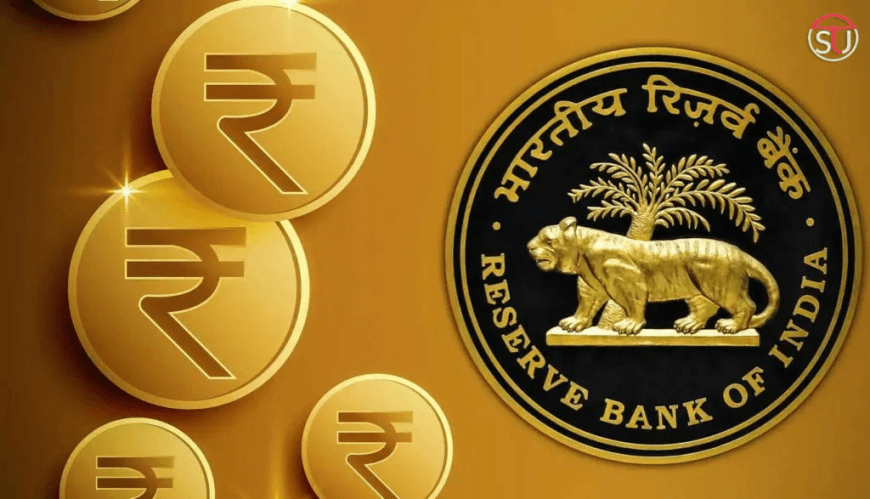RBI e-Rupee Explained: How Money Transfers Without Internet & Why It’s Different from Normal Currency
The RBI’s e-Rupee (Digital Rupee) is India’s official digital currency that enables instant money transfers—even without internet access. Learn how e₹ differs from cash, UPI, and other payment systems, and why it could redefine India’s digital financial future.
RBI eRupee: How Money Transfers Without Internet and Why It Differs from Normal Currency
India’s journey toward a cashless economy took a giant leap with the launch of the Reserve Bank of India’s Digital Rupee (e₹), a revolutionary step toward a fully digital legal tender.
Unlike UPI or mobile banking, the e-Rupee allows users to send or receive money even without internet connectivity, creating new possibilities for seamless financial inclusion across rural and urban India.
What Is RBI eRupee (Digital Rupee)?
The e-Rupee is India’s version of Central Bank Digital Currency (CBDC) — a digital representation of physical money issued and backed entirely by the RBI. It holds the same face value as physical cash and is legally recognized for all domestic transactions, small or large.
RBI e-Rupee Explained: How Money Transfers Without Internet
Unlike cryptocurrencies, which are decentralized and volatile, the Digital Rupee is centrally managed, sovereign-backed, and fully secure, ensuring stability and trust.
How eRupee Works Without Internet
One of the most unique aspects of the e-Rupee is its ability to perform offline transactions.
This feature enables money transfers between users’ digital wallets without internet access—a breakthrough for India’s remote areas with patchy connectivity.
Offline transactions rely on near-field communication (NFC) or similar proximity-based technologies. When two devices come close, the digital wallet deducts and adds money directly, similar to handing over physical cash.
The data synchronizes with the central ledger once the device reconnects to the internet.
eRupee vs Normal Currency
| Feature | eRupee (Digital Rupee) | Normal Currency (Cash) |
|---|---|---|
| Issuing Authority | RBI (Digital Format) | RBI (Physical Format) |
| Medium of Transaction | Digital Wallet | Physical Notes/Coins |
| Internet Requirement | Works with and without internet | Not required |
| Storage | Stored in secure e-Rupee wallet | Kept in wallets or ATMs |
| Traceability | Fully traceable for transparency | Anonymous |
| Risk of Theft | Protected by app authentication | Can be lost or stolen |
| Transfer Speed | Instant digital transfer | Manual exchange |
| Use Case | Online/offline digital payments | Traditional cash transactions |
Difference Between eRupee and UPI
Although both enable digital payments, e-Rupee and UPI serve entirely different purposes.
Store of Value: The eRupee itself is money (digital legal tender), whereas UPI is merely a payment method moving money between bank accounts.
Bank Intermediation: UPI requires a banking channel for every transaction, while eRupee transfers happen directly from wallet to wallet, with no bank in between.
Offline Payments: The eRupee can enable payments without internet, which UPI cannot.
Anonymity: eRupee transactions can carry a higher level of privacy similar to cash, a feature not available with UPI.
Real-World Uses of eRupee
Government Subsidies & Welfare Transfers:
Direct Benefit Transfers (DBT) through e₹ can eliminate intermediaries, ensuring money reaches the intended beneficiary instantly and securely.Offline Rural Payments:
The RBI’s offline e₹ mode ensures remote regions with low connectivity can still access digital payments, empowering rural India.Retail Transactions:
Users can shop, pay bills, or transfer funds at merchant outlets simply by scanning a QR code or exchanging tokens offline.Corporate & Trade Applications:
Future pilots aim to use e₹ for instant lending, trade finance, and cross-border transactions—reducing foreign exchange complexities.
Security and Privacy
Every eRupee transaction is built on cryptographically secure infrastructure under RBI regulation. The digital wallets are issued by authorized banks, such as SBI, HDFC, and Axis Bank, each secured with multi-factor authentication.
Moreover, RBI is exploring ways to integrate limited anonymity—protecting small-value transfers from excessive traceability.
Why RBI Introduced the Digital Rupee
The RBI’s goals behind introducing e₹ include:
Reducing dependency on cash management and printing costs.
Boosting transparency and curbing black money.
Enhancing transaction efficiency and financial inclusion.
Promoting a cashless yet sovereign digital ecosystem.
Improving monetary policy execution through programmable currency.
By bridging the gap between physical and digital payments, the e₹ will serve as a hybrid financial tool — combining the privacy of cash with the traceability and convenience of digital finance.
The Future of eRupee in India
India’s eRupee pilot programs show promising adoption in both retail and wholesale sectors. With plans for interoperability with UPI and offline smart cards, the eRupee could eventually become as common as cash or Paytm wallet transactions.
Experts predict that as the technology matures, businesses may adopt programmable eRupee for automated contracts, loan repayments, or tax settlements — making transactions faster and error-free.
Final Thoughts
The RBI’s eRupee marks a turning point in India’s financial evolution. With its capacity to conduct secure, instant, and offline transfers, the digital rupee ensures that money reaches the right person every time — even without a network. As India progresses toward a self-reliant, transparent, and tech-driven economic future, the eRupee stands as a symbol of innovation, trust, and financial inclusivity.
